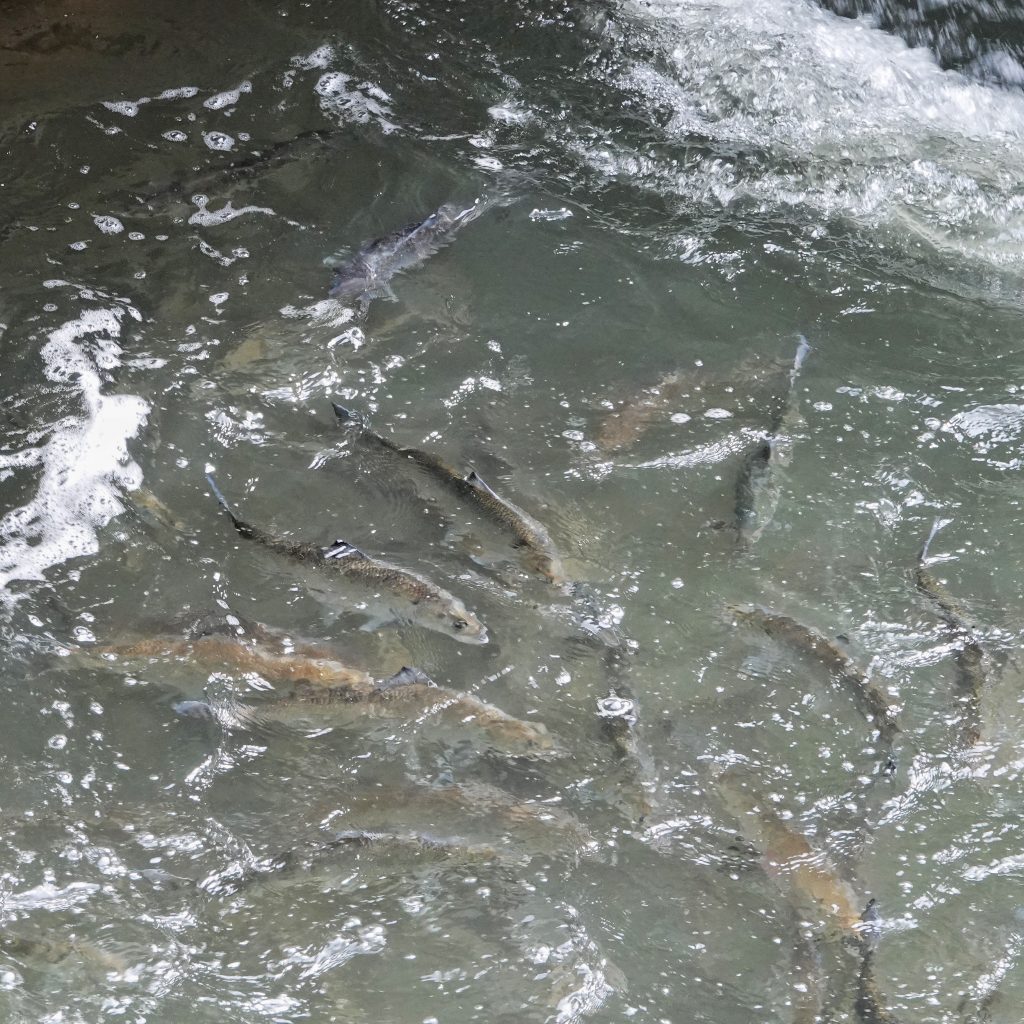
One of the many things on my fishing to-do list was to check into shad. I had accidentally caught one many years ago while fishing spinners for steelhead, and I’d heard that 20 fish days are not uncommon, so when an old fisherman neighbor who can’t get out much was rhapsodizing about how much fun shad fishing was, and asked me to bring them a few fish, I decided to give it a go. But it wasn’t as easy as I expected. My first attempt was just a stop on the way home from fishing the Wind River for salmon, and I attributed my skunking to an absence of fish, a lack of time, and/or spinners that were too large. But after my second trip when I also didn’t hook a fish, when there were 30,000 fish a day going through the fish ladder, and when I spent a few hours using trout spinners, I was convinced that I was doing something wrong. So I did some research.
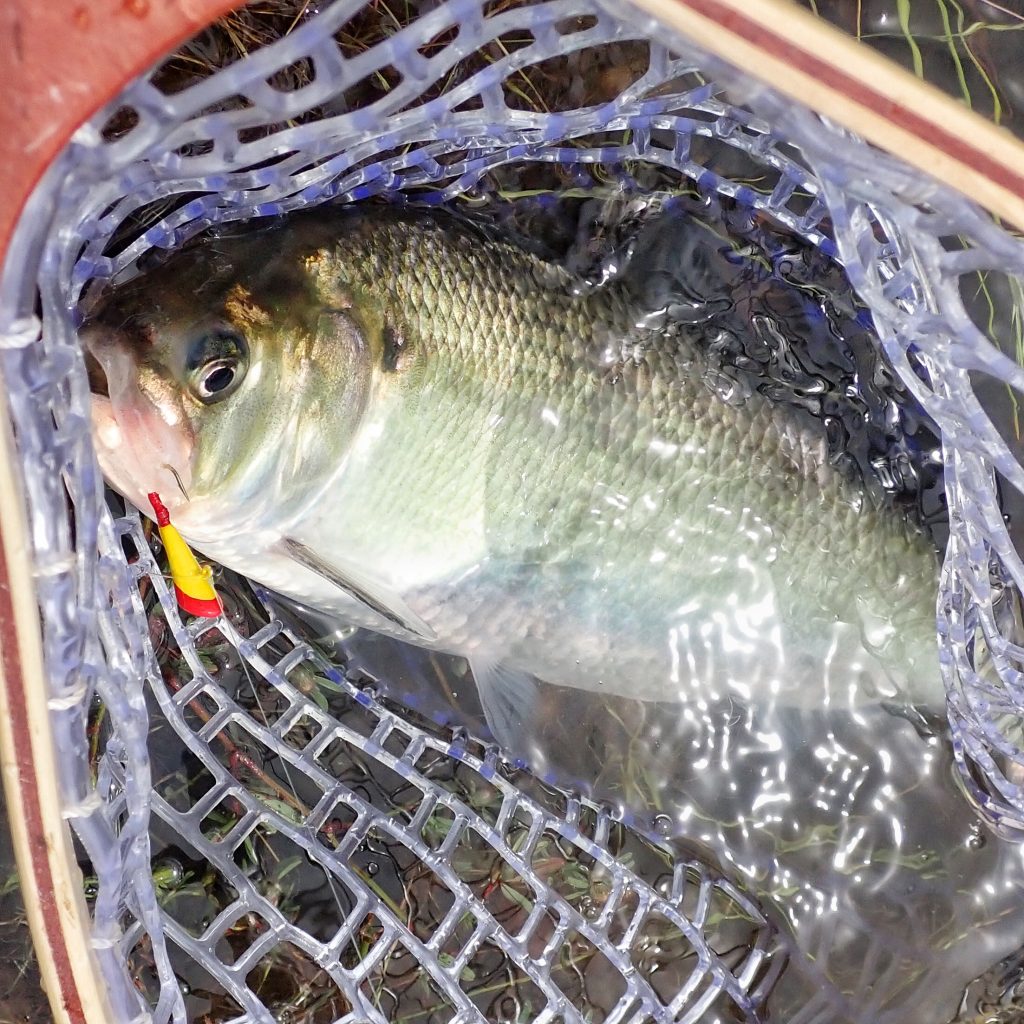
It turns out that shad, like steelhead and salmon, don’t actively feed on their spawning runs, and prior to the long upstream trek they are primarily plankton feeders, so the one I had previously caught on a spinner was probably a fluke. They also travel in very narrow columns, usually along a current seam and near the bottom, and, if you don’t swing your offering right in front of their nose, the 1-in-a-hundred that might strike will just ignore it. So, armed with this knowledge, as well as a dozen shad darts and egg sinkers, I headed back to Bonneville. But I still got skunked, and probably a big part of that was because I spent most of my time dealing with snagged gear. After about five hours I had lost all the shad stuff I had just bought, and was feeling very discouraged.
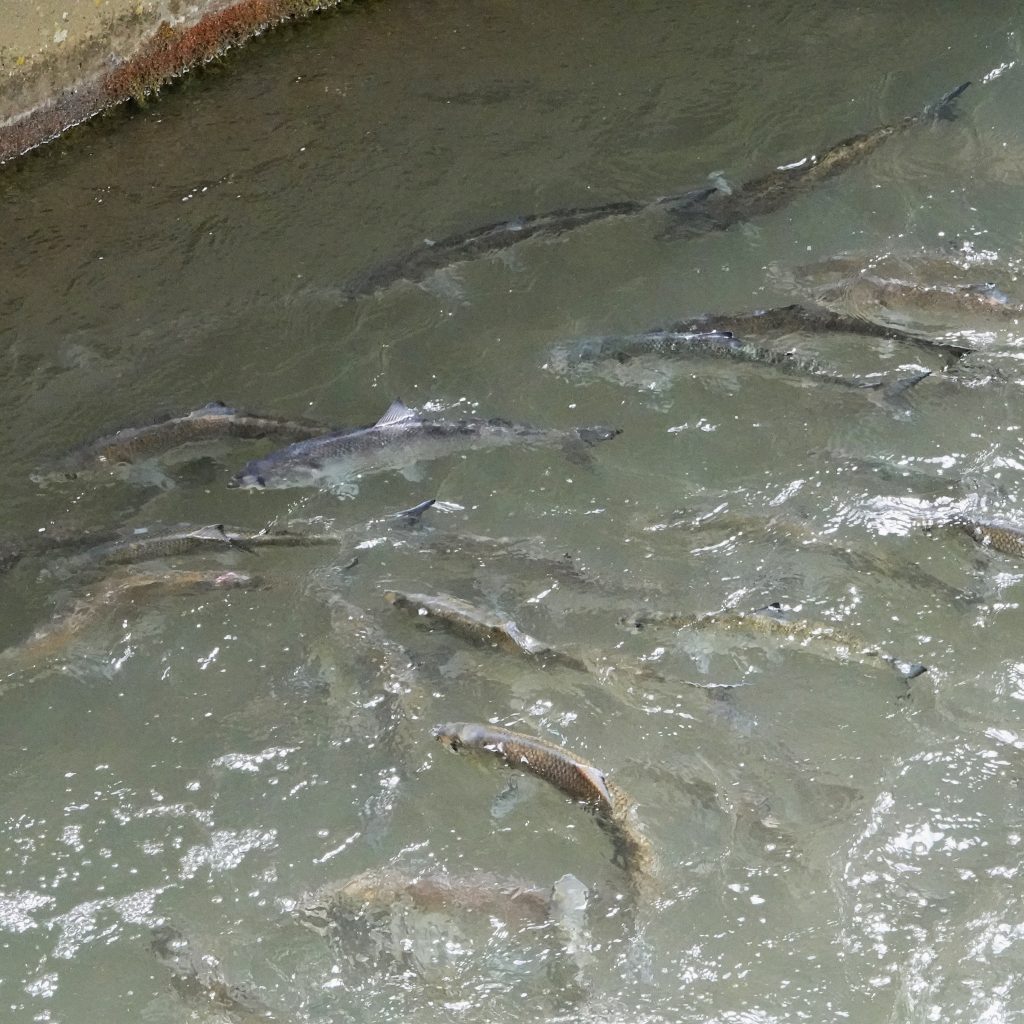
Walking dejectedly back to my van I spied an elderly Asian gentleman, who may well have been fishing for shad since before I was born, landing one of my intended quarry, and when I looked closer I noticed he had a bucketful! So I approached him and asked for guidance. And he showed me that I was doing 2 main things wrong- my weight was below rather than above my dart, and I was bringing my lure back slowly through slow water that seldom holds fish but is rife with snags. As if to show the efficacy of his teachings he caught yet another fish whilst we talked. So I drove back to town, and stopped and bought a bunch more gear. The following morning I headed back to Bonneville, where, fishing with confidence now because I had a system, I hooked several shad, landed 4, and only lost a few rigs, all in just a couple hours. Very satisfying experience, and my neighbor was quite happy to have some shad for his freezer.
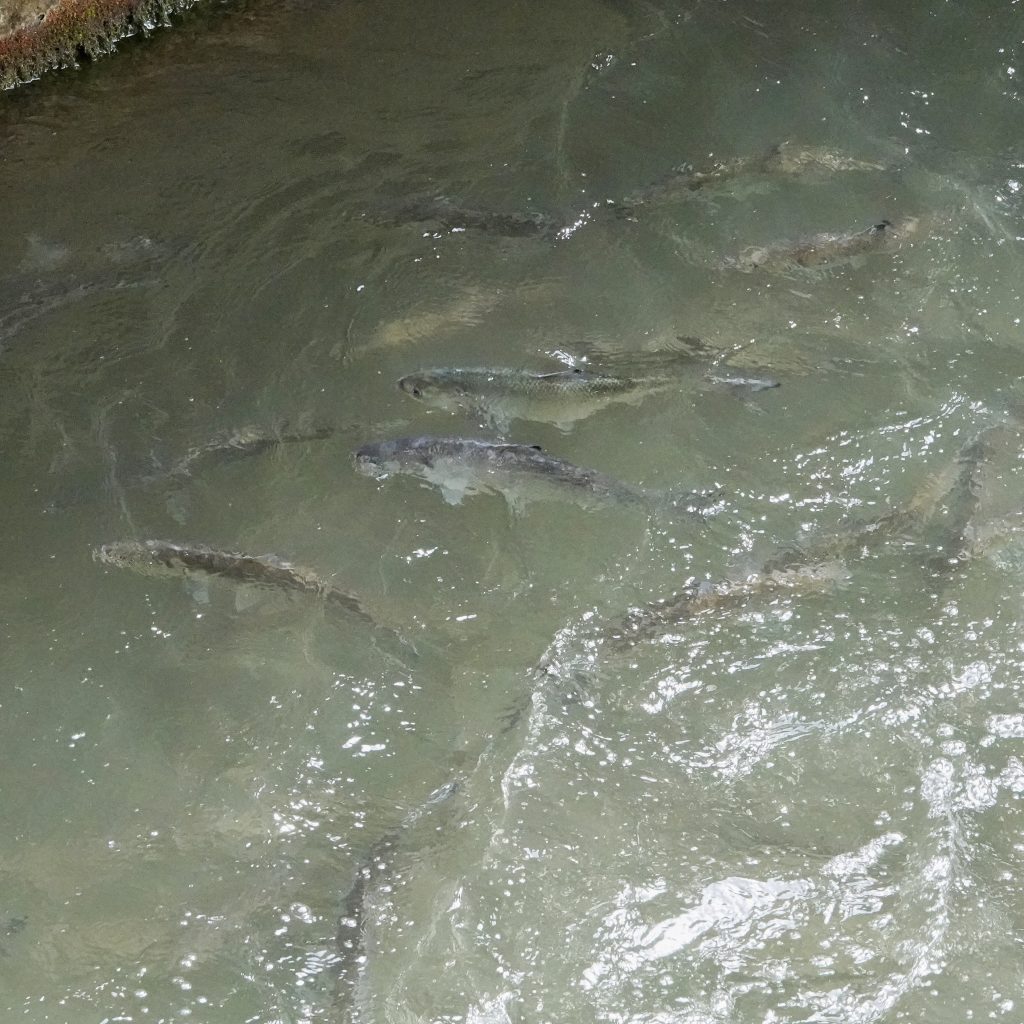
In their native range along the East Coast, shad have a long history of providing for humans. Native peoples were nearly as dependent on the shad as the indigenous cultures of the PNW were on salmon. Amelanchier sp. are called shadbush (in the west we call them serviceberry), because their flowering coincided with the bounty of the shad runs (Shad start moving up the rivers when the water temperature exceeds 50⁰, and peak when it is 54⁰−57⁰). And America might still be under British rule if not for a fortuitously early shad run on the Schuylkill River in 1778, which saved the Continental Army from starvation after their disastrous winter at Valley Forge.
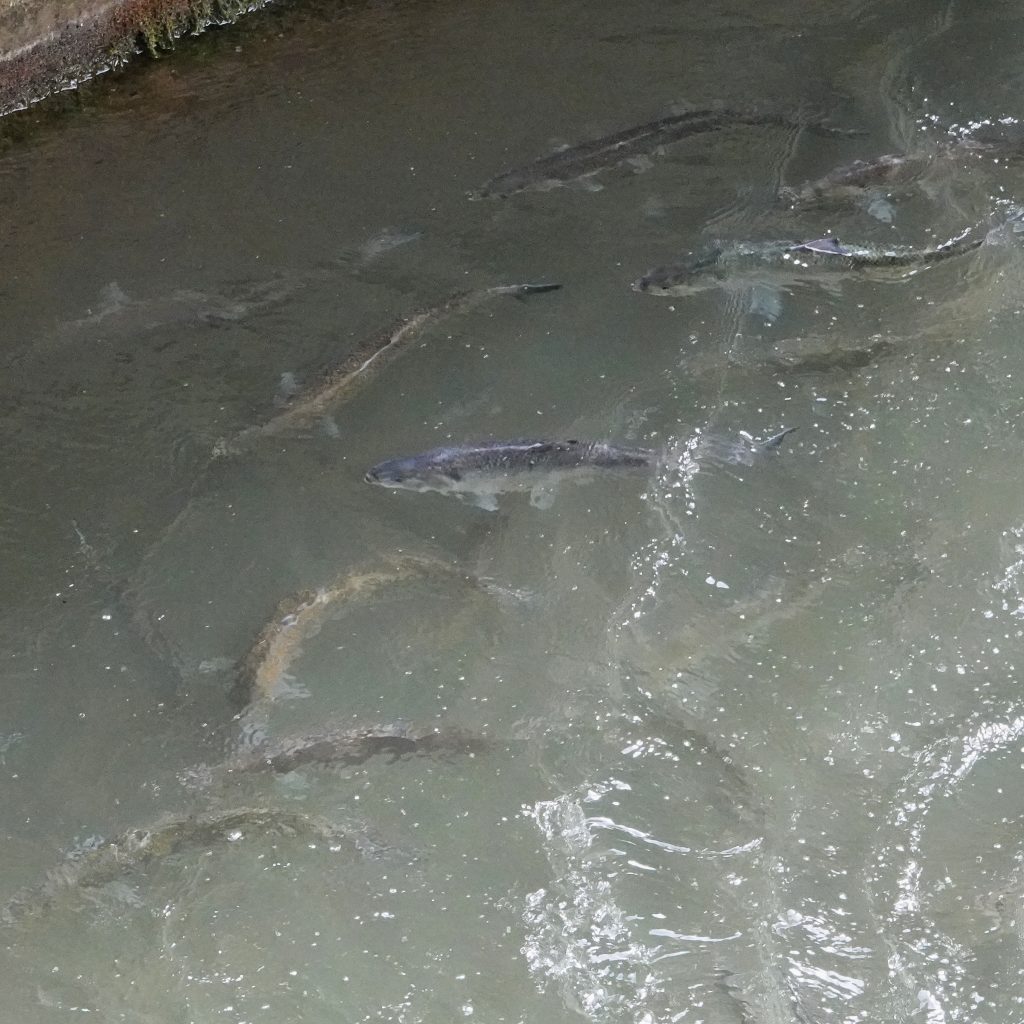
American Shad are an oddity among invasive species, because anadromous fish don’t tend to thrive outside their native environment, and most introductions of anadromous fish outside their home range fail. But shad have been wildly successful, probably at least in part because the multiple introductions of these fish came from a variety of sources, which led to an extremely genetically diverse population and therefore unusual adaptability. First introduced in 1871 into rivers feeding San Francisco Bay, within 5 years they were reported in the Columbia River. Because the fish had voluntarily colonized the Columbia River, and seemed to be thriving, an additional 900,000 fry were stocked in the Columbia between 1883-86. Their numbers were modest until the construction of Bonneville Dam created ideal slow, warmer spawning habitat, and they exploded with the construction of the Dalles Dam (1957) and its inundation of Celilo Falls (which had blocked their upstream passage), such that 20 times as many fish (265,000) passed Bonneville in 1961 as in 1957, and there has been a roughly 5% yearly increase since then. Then in 2018, probably due both directly and indirectly to climate change, their numbers suddenly doubled, and 2019 saw over 7 million shad pass through the fish ladder at Bonneville. And this may not even tell the whole story, because many fish pass the dam through the shipping locks and are not counted.
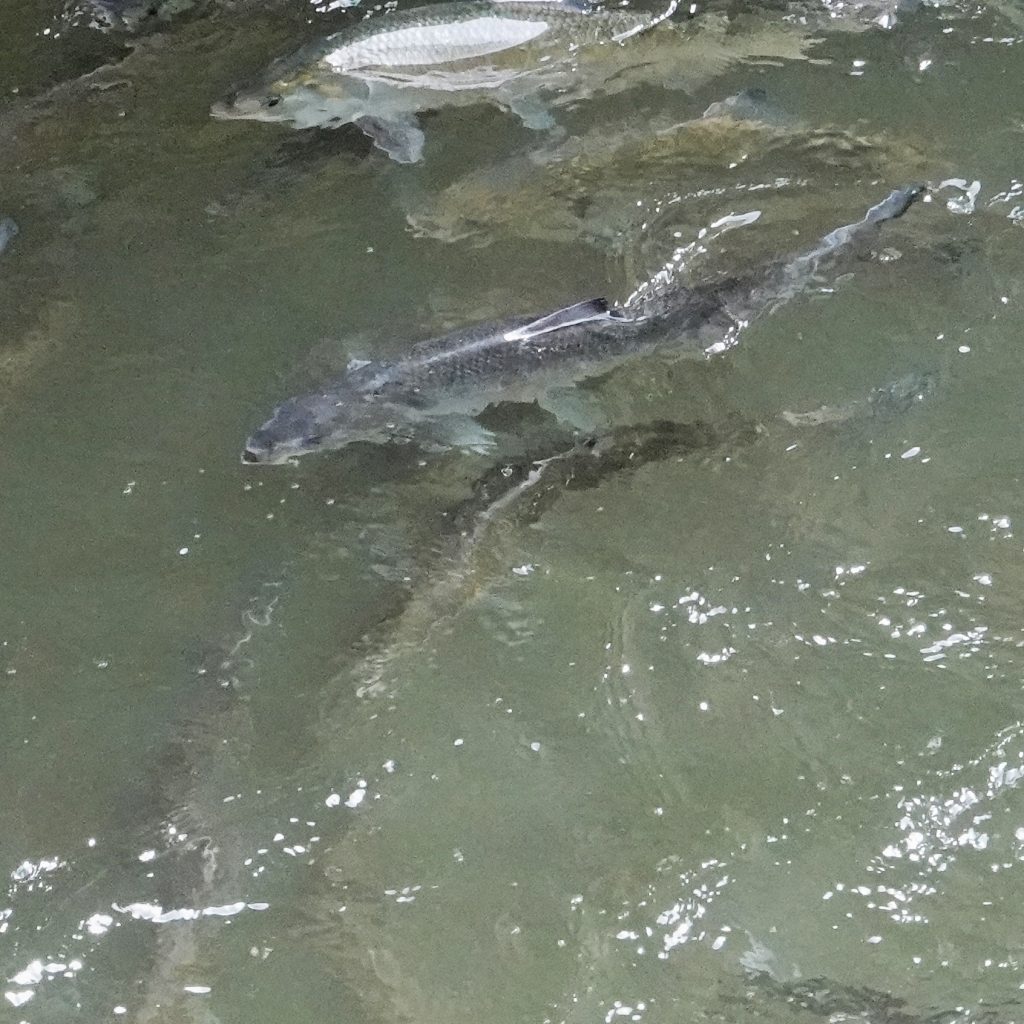
Understandably, many are concerned about the effect such huge numbers of shad are having on native salmonids, but because of a lack of hard evidence the answer is inconclusive (American Shad of the Pacific Coast: A Harmful Invasive Species or Benign Introduction?; Hassellman et al.; 2012). They must compete with salmonid fry for zooplankton resources, but probably also provide food for the same fish as the salmonids become more piscivorial. They are prey for terns, cormorants, northern pike minnow, seals and sea lions, and thus take predatory pressure off the salmonids, but the extra resources may be driving a population boom in those same predators. The one definite consequence of increased shad runs is an increase in the parasites they bring with them, including the nematode worms in Anisakis, which had heretofore been a strictly marine species, but may be developing a fully freshwater lifecycle.
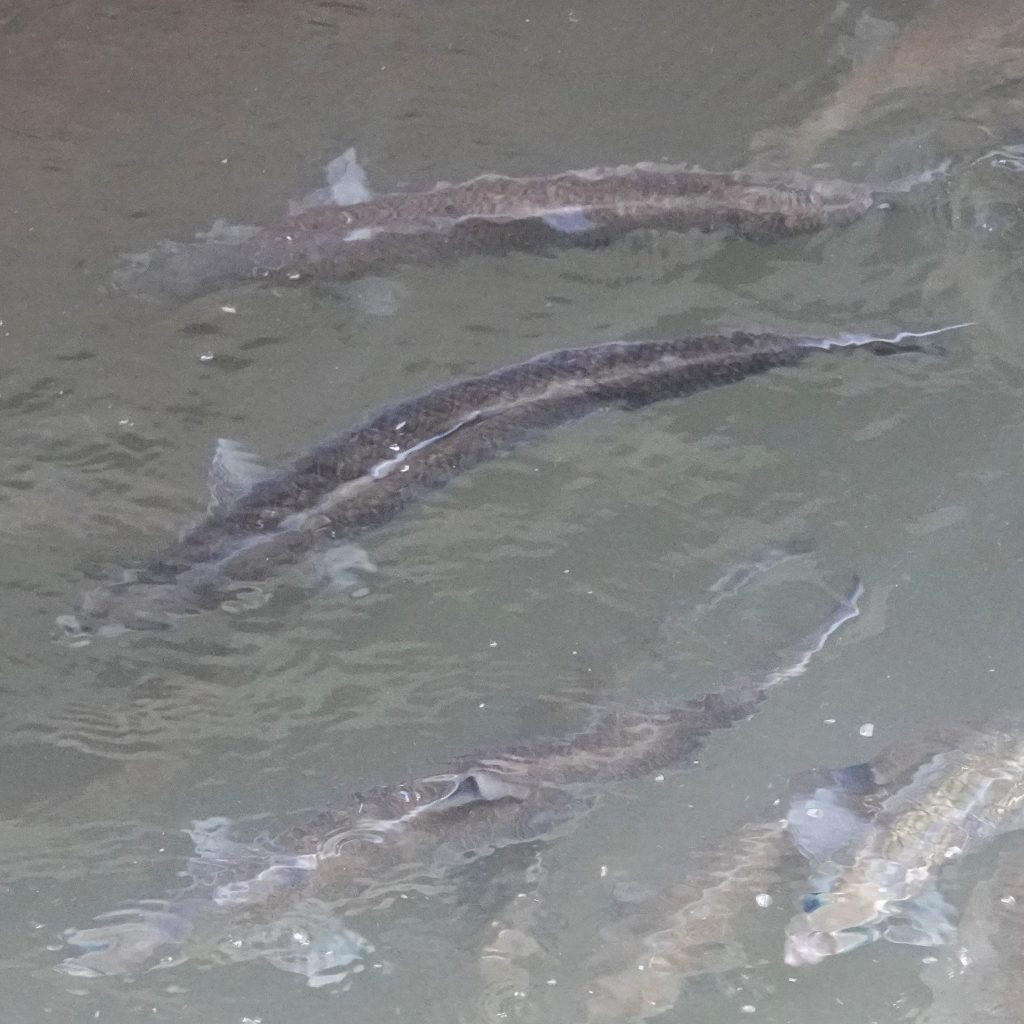
All of this is rather ironic considering that American Shad are threatened in their native range, with historically low numbers all along the eastern seaboard. It is also interesting to note that the presence of dams (that lack anadromous fish friendly fish ladders) on major East Coast rivers is one of the many anthropogenic factors (along with pollution, overfishing, habitat loss, climate change, etc.) in this decline, whereas the dams (with fish ladders) on the Columbia have spurred their population growth here. It has gotten so bad that the Hudson River in NY state, which once hosted shad in the millions (the commercial catch alone was over a half million fish), banned all fishing for shad in 2010, and, though there are restoration measures in effect, there are no plans to allow shad fishing on this historic river anytime soon.
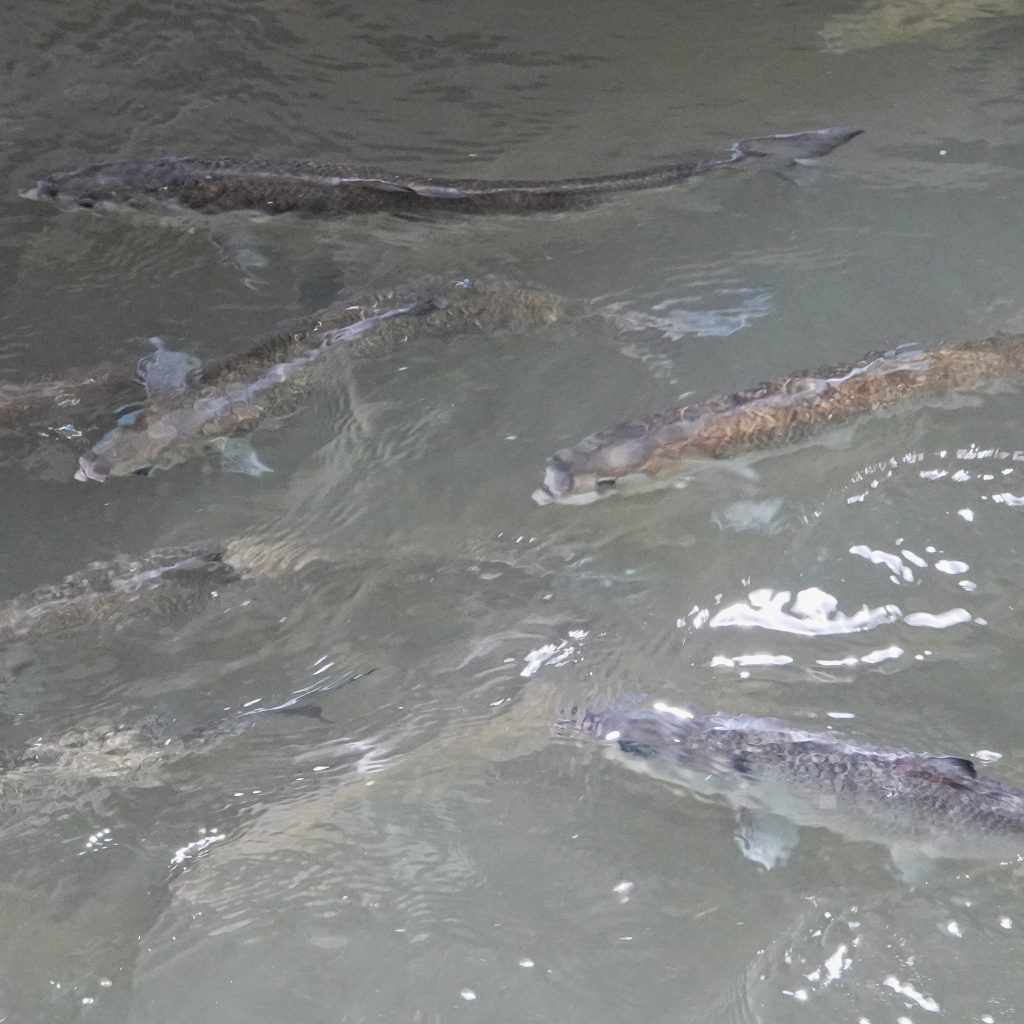
Description-Large (males are 12-19” long and weigh 1-3#, and females are 16-24” long and weigh 3-6#) oval fish with silver sides and a green to blue back; has a deeply forked tail and lacks an adipose fin; usually has a dark spot behind the upper gill flap, and often has a row of spots behind that; lower jaw is shorter than the upper jaw.
Similar species– The combination of silver coloring, lack of adipose fin, and deeply forked tail distinguishes American Shad from all other fish in our region; other species of shad are only found on the East Coast
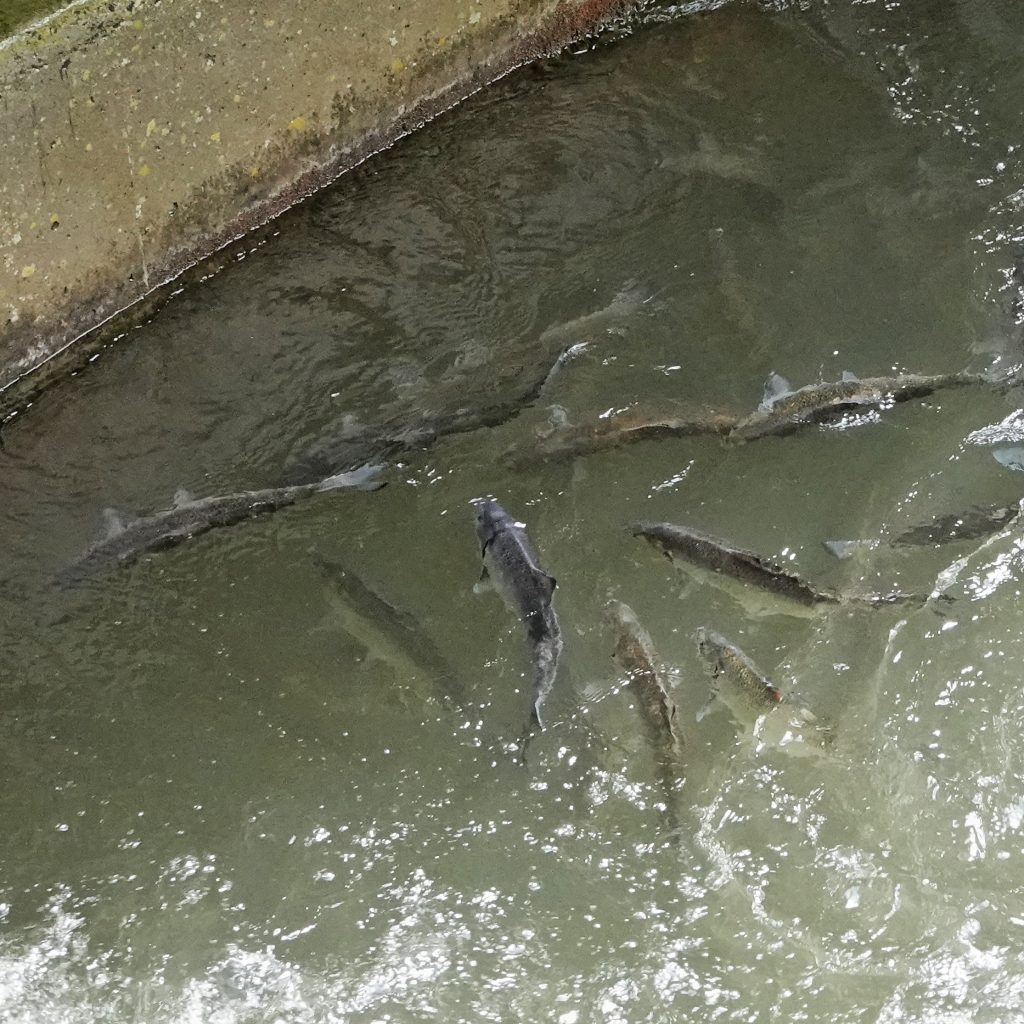
Habitat-Anadromous; spawn in relatively warm, slow water in major rivers (almost never found in smaller, colder, faster streams).
Range-Historically found only on the East Coast of North America, but introduced on the West Coast; in our region they are found in freshwater primarily in the Columbia, Willamette, Snake, and Umpqua rivers, as well as in small numbers in a handful of coastal Oregon rivers.
Eats-Zooplankton and plankton in freshwater as fry (primarily copepods, water fleas, and scud), and plankton, zooplankton, shrimp and other small crustaceans when in marine waters.
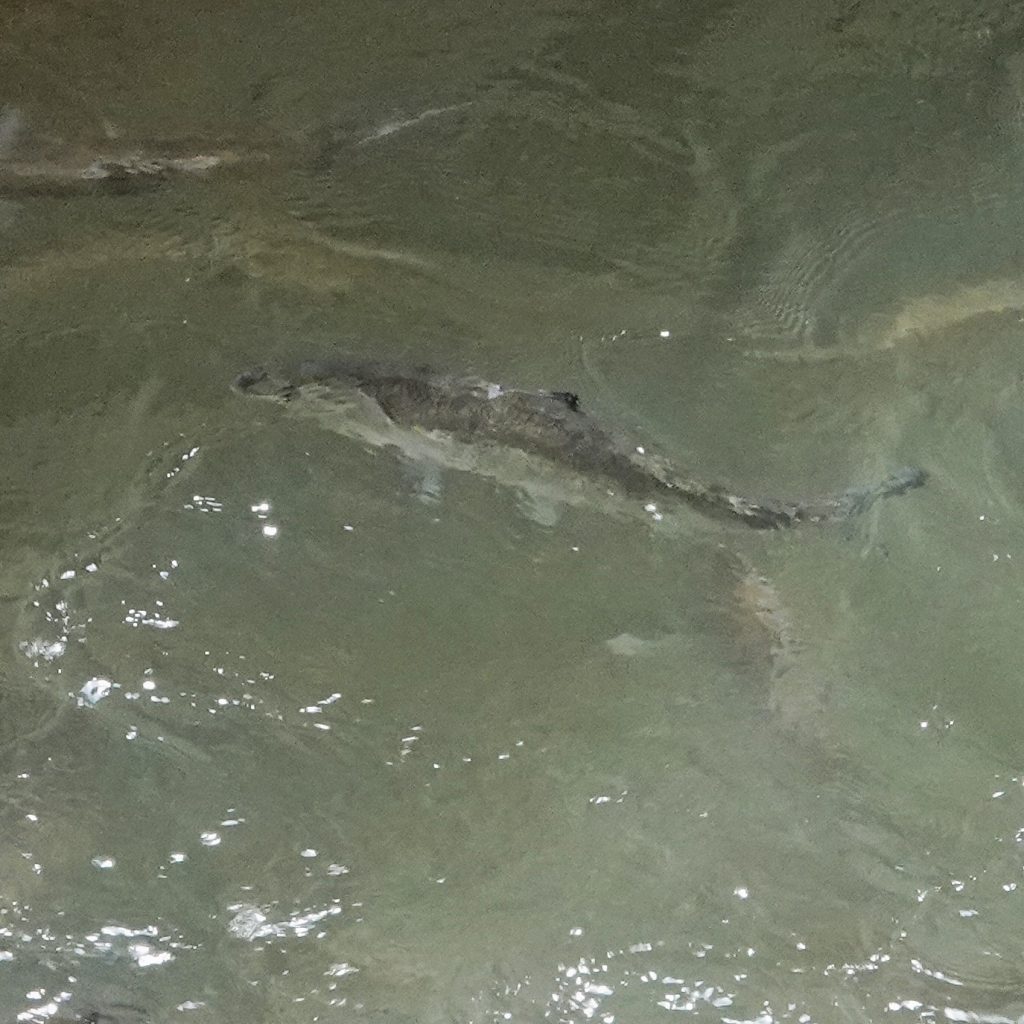
Eaten by-Almost anything that eats fish, including but not limited to, walleye, smallmouth bass, juvenile salmonids, cormorants, terns, gulls, mergansers, loons, osprey, mink, otter, seals, and sea lions as fry and returning adults in freshwater; in the ocean they are prey for most larger predators, including, but not limited to, orcas, dolphins and porpoises, sharks, seals and sea lions, and any piscivorial birds large enough to subdue them; it is interesting to note that shad hear better than most fish, with fine sensory hairs in their otoliths (ear bones), liquid filled channels in their head, and a swim bladder that extends into their brain, all of which enable the fish to easily detect disturbances in the water and the echolocation utilized by orcas, porpoises, and dolphins.
Adults active-Begin moving into freshwater when temperatures reach 50⁰, usually in May in the Columbia River, although they may arrive as early as late March in more southerly rivers; for the most part they are done spawning and the survivors are heading back downstream by early August.

Life cycle-Peak spawning happens around 63.5⁰, and usually occurs between dusk and midnight; shad are broadcast spawners, which means that groups of males and females eject milt and semi buoyant eggs together into open water over Sandy or pebbly bottoms; each individual usually spawns multiple times during a given season, and, like steelhead but unlike Pacific salmon, they may survive and return to the ocean (iteroparity), and then return to freshwater to spawn again in later years; a single female may release over a half million eggs; eggs hatch in 6-15 days, depending on temperature, and remain in their birth area until fall, (by which time they are 1.5-4.5” long) when they begin migrating to the sea; usually spend 2-3 years in the marine environment before returning to spawn; may live 6-7 years.
Etymology of names–Alosa is from the Latin word for shad. The specific epithet sapidissima is from the Latin word for ‘most delicious’. Shad is from an Old English word for herring, and American Shad are the largest members of the herring family, Clupeidae..
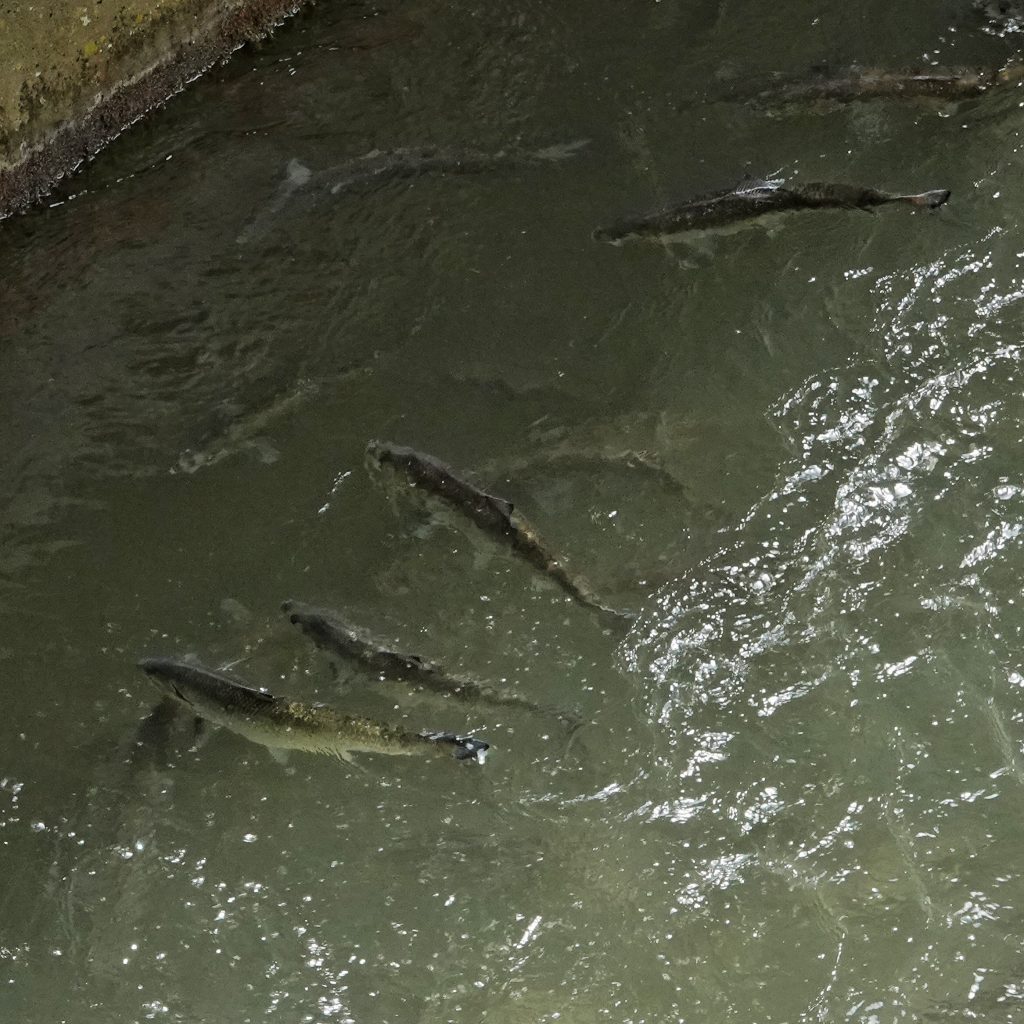
https://citeseerx.ist.psu.edu/viewdoc/download?doi=10.1.1.707.1849&rep=rep1&type=pdf
https://www.fws.gov/species/american-shad-alosa-sapidissima
https://www.nwcouncil.org/reports/columbia-river-history/shad/
https://www.nwcouncil.org/reports/american-shad-columbia-river-past-present-future/
https://en.m.wikipedia.org/wiki/American_shad
https://en.m.wikipedia.org/wiki/Alosa
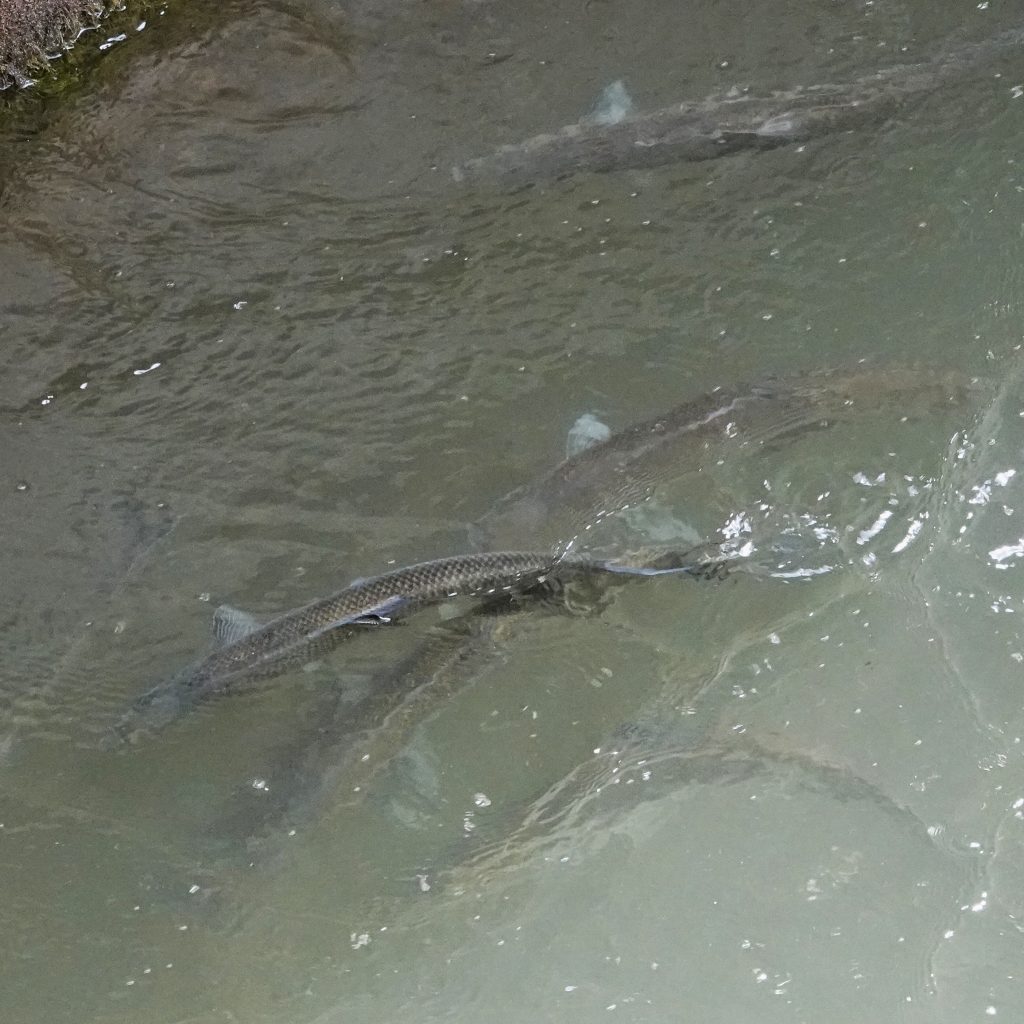
Fascinating commentary on the history of Shad in the West, and the uncertainties of their impact on Salmon and Steelhead. Thanks!
Thanks for your appreciation!
Thanks for your writing about shad in the PNW. I had read just a little before in The Founding Fish, by John McPhee. A good book.
Thanks Sharon! It was almost all new news to me!